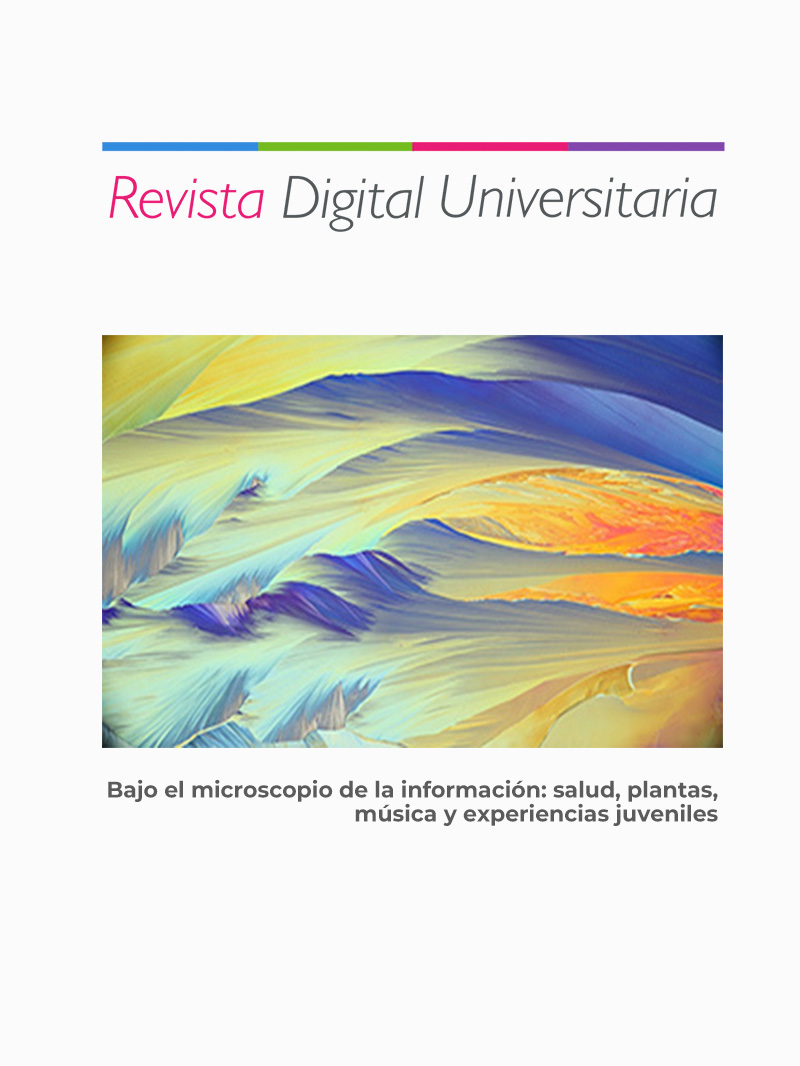Mistletoe: bad or good depends on who is looking at it
DOI:
https://doi.org/10.22201/cuaieed.16076079e.2023.24.3.6Keywords:
Antagonism, Ecological interactions, Forest species, Frugivory, Mutualism, ParasitismAbstract
The ecological interactions that occur in the different ecosystems allow a flow of energy and nutrients. They can be intraspecific or interspecific and can be categorized in mutualisms, when the species involved are benefited; or in antagonisms, when there are negative effects consequence of the interaction. Also, there are parasitic plants with the ability to establish themselves on other plants, to feed and develop. An example is mistletoe, which are a group of plants that have a negative impact on forest species and urban trees, since they can affect their development. Despite this, it can also benefit other organisms such as birds or mammals by providing them with food, shelter, or nesting sites. This paper describes cases and characteristics of these interactions.
References
Aguilar, R., Ashworth, L., Cagnolo, L., Jausoro, M., Quesada, M., y Galetto, L. (2009). Dinámica de interacciones mutualistas y antagonistas en ambientes fragmentados. En R. Medel, M. A. Aizen, y R. Zamora (Eds.), Ecología y evolución de interacciones planta-animal (pp. 199-231). Universitaria.
Chapin, F. S., Matson, P. A., y Vitousek, P. M. (2011). Principles of Terrestrial Ecosystem Ecology (2.a ed.). Springer.
Fadini, R. F., Fischer, E., Castro, S. J., Araujo, A. C., Ornelas, J. F., y de Souza, P. R. (2018). Bat and bee pollination in Psittacanthus mistletoes, a genus regarded as exclusively hummingbird-pollinated. Ecology, 99(5), 1239-1241. https://doi.org/10.1002/ecy.2140
León-Camargo, D., y Rangel-Churio, J. O. (2015). Interacción colibrí-flor en tres remanentes de bosque tropical seco (bst) del municipio de Chimichagua (Cesar, Colombia). Caldasia, 37(1), 107-123. https://doi.org/10.15446/caldasia.v37n1.50812
Mathiasen, R. L., González Elizondo, M. S., González Elizondo, M., Howell, B. E., López Enríquez, I. L., Scott, J., y Tena Flores, J. A. (2008). Distribution of Dwarf Mistletoes (Arceuthobium spp., Viscaceae) in Durango, México. Madroño, 55(2), 161-169. https://doi.org/bfrqtt
Mathiasen, R. L., Daugherty, C. M., y Guerra De la Cruz, V. (2011). Muérdagos enanos (Arceuthobium ssp.) en el sur de México: distribución, hospederos y cambios en la nomenclatura. En A. Equihua Martínez, E. Estrada Vanegas, J. A. Acuña Soto, y M. P. Cháirez Grijalva (Eds.), Memoria del xv Simposio Nacional de Parasitología Forestal (pp. 161-168). Colegio de Postgraduados.
Oliva Rivera, H., Landero Torres, I., y Murguía González, J. (2011). Plantas parásitas: diversidad y hospederos de las familias Loranthaceae y Viscaceae. En A. Cruz Angón, y F. G. Lorea Hernández, V. Hernández Ortiz y J. E. Morales Mavil (Eds.), La biodiversidad en Veracruz: Estudio de Estado (vol. II, pp. 149-158). Comisión Nacional para el Conocimiento y Uso de la Biodiversidad; Gobierno del Estado de Veracruz; Universidad Veracruzana; Instituto de Ecología, A.C.
Ornelas, J. F. (2021). Los muérdagos y el “misterio de misterios” de Darwin. Elementos, 124, 57-64. https://goo.su/RvG2b
Pacheco Huh, J., y Chávez Pesqueira, M. (2020). La domesticación en las interacciones ecológicas, una mirada a nuevos ambientes. Desde el Herbario cicy, 12, 94-98. https://goo.su/DraP
Ramírez, M. M., y Ornelas, J. F. (2010). Polinización y producción de néctar de Psittacanthus schiedeanus (Loranthaceae) en el centro de Veracruz, México. Boletín de la Sociedad Botánica de México, 87, 61-67. https://doi.org/10.17129/botsci.301
Rico-Gray, V. (2005). Las interacciones ecológicas y su relación con la conservación de la biodiversidad. Cuadernos de biodiversidad, 18, 3-8. https://doi.org/10.14198/cdbio.2005.18.01
Shaw, D. C., Watson, D. M., y Mathiasen, R. L. (2004). Comparison of dwarf mistletoes (Arceuthobium spp., Viscaceae) in the western United States with mistletoes (Amyema spp., Loranthaceae) in Australia—ecological analogs and reciprocal models for ecosystem management. Australian Journal of Botany, 52(4), 481-498. https://doi.org/10.1071/BT03074
Sotero-García, A. I., Arteaga-Reyes, T. T., Martínez-Campos, A. R., y Bunge-Vivier, V. (2018). Conocimiento local del género Arceuthobium en un Área Natural Protegida del centro de México. Boletín Latinoamericano y del Caribe de Plantas Medicinales y Aromáticas, 17(2), 120-129. https://goo.su/sKHaM
Tercero-Bucardo, N., y Kitzberger, T. (2005). Plantas parásitas que aprietan pero no ahorcan. Desde la Patagonia, Difundiendo Saberes, 2(3), 2-5. https://goo.su/yd5ov
Published
Issue
Section
License
Copyright (c) 2022 Revista Digital Universitaria

This work is licensed under a Creative Commons Attribution-NonCommercial-ShareAlike 4.0 International License.

Revista Digital Universitaria es editada por la Universidad Nacional Autónoma de México se distribuye bajo una Licencia Creative Commons Atribución-NoComercial 4.0 Internacional. Basada en una obra en http://revista.unam.mx/.






